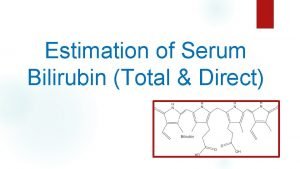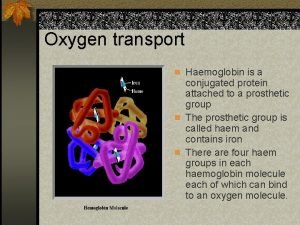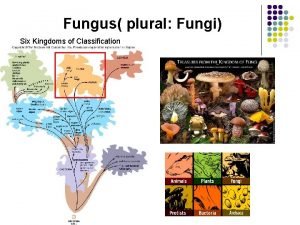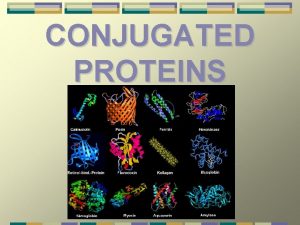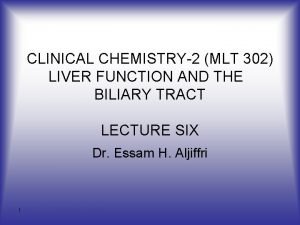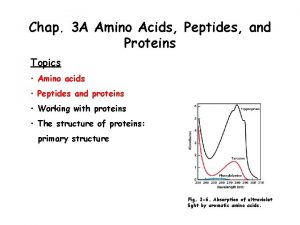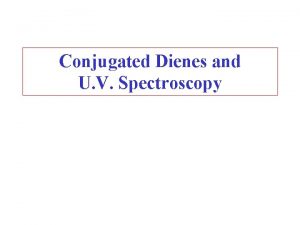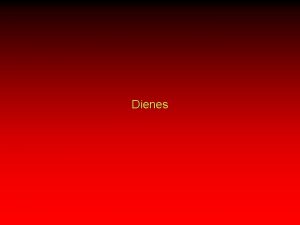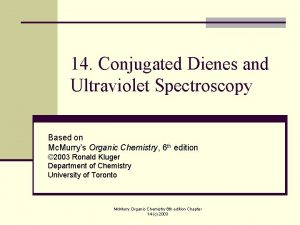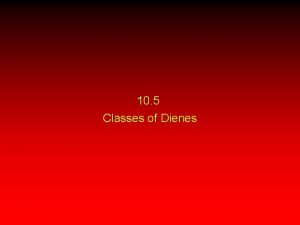Chapter 14 UV Spectroscopy Conjugated and Nonconjugated Dienes








- Slides: 8

Chapter 14 UV Spectroscopy

Conjugated and Nonconjugated Dienes • Compounds can have more than one double or triple bond • If they are separated by only one single bond they are conjugated and their orbitals interact • The conjugated diene 1, 3 -butadiene has properties that are very different from those of the nonconjugated diene, 1, 5 -pentadiene

14. 8 Structure Determination in Conjugated Systems: UV Spectroscopy • Conjugated compounds can absorb light in the ultraviolet region of the spectrum • The electrons in the highest occupied molecular orbital (HOMO) undergo a transition to the lowest unoccupied molecular orbital (LUMO) • The region from 2 x 10 -7 m to 4 x 10 -7 m (200 to 400 nm) is most useful in organic chemistry • A plot of absorbance (log of the ratio of the intensity of light in over light transmitted) against wavelength in this region is an ultraviolet spectrum – see Figure 14 -12

14. 9 Ultraviolet Spectrum of 1, 3 Butadiene • Example: 1, 4 -butadiene has four molecular orbitals with the lowest two occupied • Electronic transition is from HOMO to LUMO at 217 nm (peak is broad because of combination with stretching, bending)


14. 10 Interpreting UV Spectra: Effect of Conjugation • max: wavelength where UV absorbance for a compound is greatest • Energy difference between HOMO and LUMO decreases as the extent of conjugation increases • max increases as conjugation increases (lower energy) – 1, 3 -butadiene: 217 nm, 1, 3, 5 -hexatriene: 258 nm • Substituents on system increase max • See Table 14 -2 for examples


14. 11 Conjugation, Color and the Chemistry of Vision • Visible region is about 400 to 800 nm • Extended systems of conjugation absorb in visible region • b-Carotene, 11 double bonds in conjugation, max = 455 nm • Visual pigments are responsible for absorbing light in eye and triggering nerves to send signal to brain

